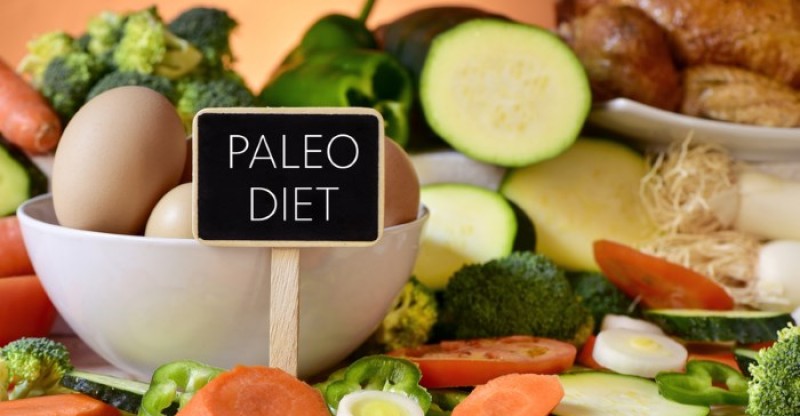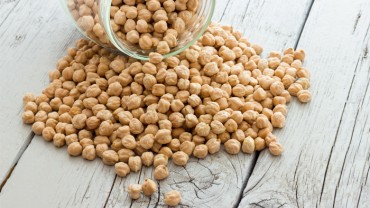What is Paleo Diet, How it Works and Detailed Meal Plan
Why Should You Eat Paleo?
Why would anyone want to adhere to a Paleo diet?
Here’s the answer – better health, enhanced energy, and increased longevity (1, 2, 3).
Although some people say that more investigation is required to prove that the Paleo diet is truly better for our health, there are many current studies that show a variety of specific benefits (4).
In one such study, a Paleo diet caused a reversal of fat-tissue effects in obese, postmenopausal women (5).
National Geographic did an infield study of their own (6), which reveals the amazing results of rural people living a lifestyle that’s in line with the Paleo diet.
Another group that‘s wild about the Paleo diet is the CrossFit community.
They’ve lovingly embraced Paleo because of all the ways it keeps your body in tip-top shape as a lean, mean weightlifting machine.
The Paleo diet is very low-carb.
A study done by the American Heart Association showed the following: on a low-carb diet, more lean muscle tissue was preserved (8).
Other studies have proven that hormonal changes take place when the body is consuming a low-carb diet (9,10).
In fact, it releases less insulin and more glucagon, so many chain reactions within the body will fuel your brain better.
A Paleo diet also produces decreased oxidative stress levels and inflammation of the cells in the body (11).
Those suffering from multiple sclerosis could also benefit from adopting a Paleo eating lifestyle.
And according to another study, patients who were put on a Paleo diet had less fatigue (12).
Individuals suffering from Type 2 Diabetes also responded better to a Paleo diet than the recommended Type 2 Diabetic Diet given to them by healthcare professionals (13).
Even people who were relatively healthy volunteered to stay on a short-term Paleo diet.
Here are the results:
- Their weight decreased.
- Their waists shrunk.
- Their blood pressure lowered.
- More antioxidants and potassium were apparent in their systems (14).
There are so many great things that a Paleo diet can do for an individual.
Even if none of these health benefits get you excited about adopting a Paleo eating template, the weight loss that most individuals encounter should be exciting enough to get you started.
The alternative to a Paleo diet puts your body at risk for many health concerns.
According to the Center for Disease Control (CDC), a bad diet and inactive or unhealthy lifestyle can put you at risk for heart disease (as well as obesity, diabetes, and high cholesterol) (15).
In fact, one person in the United States dies from a heart-related issue every minute.
Currently, 9% of the US population has a type of diabetes.
And there are an estimated 1 million new cases reported every year (16).
What is the Paleo Diet?
This diet is based on scientific research, which shows that people today have the same DNA structure as people who lived more than 2 million years ago (17).
Therefore, the Paleo diet brings us back to our origins — what our bodies were designed to ingest.
The Paleo diet has other names you may have heard: the Paleolithic Diet, Evolution Diet, Caveman Diet, Old Diet, Primal Diet, Stone-Age Diet, and Hunter-Gatherer Diet.
Mass agricultural practices were introduced to society less than 10,000 years ago (18).
Therefore, human beings were originally intended to eat organic meats, fish, fruits, nuts, and vegetables (19).
When adhering to a Paleo diet, nothing processed or sugar-laden is allowed.
Even most dairy should be avoided.
And since grains are farmed items, they’re all out.
Paleo brings our diets back to the basics (and in many opinions, back to true health) (20).
Eating a Paleo diet can also be more satisfying and filling than the Mediterranean diet.
A study based on nutrition and metabolism of the Paleo diet found that “a Paleolithic diet is more satiating per calorie than a Mediterranean-like diet in individuals with ischemic heart disease” (21).
Therefore, even though the group eating Paleo consumed fewer calories, the energy or calories they were eating provided better sustenance than a traditional Mediterranean one.
Origins of the Paleo Diet
The Paleo diet became popular after the book The Paleo Diet by Dr. Loren Cordain (professor of health and exercise science) was released.
Since then, Cordain has become the guru of Paleo.
In his book, Cordain describes the Paleo diet in these words, “By following these nutritional guidelines, we put our diet more in line with the evolutionary pressures that shaped our current genetics, which in turn positively influences health and well-being” (23).
According to Cordain, when you adhere to a Paleo diet, your body produces less glucose.
Paleo diets are also said to have a good balance of nutrients and vitamins.
On this diet, your proteins, fat, and carbs should be at optimal levels.
Paleo diets contain approximately 35% good fats, 35% carbs, and 30% protein (24).
Please keep in mind that a Paleo diet is not actually the best course if you’re a vegan or vegetarian.
Without grains, legumes, and some dairy, there may not be enough protein to support you.
However, taking a vitamin B supplement can help with some deficiencies one may encounter from the removal of grains from your diet.
A Paleo diet should support an active lifestyle.
Using food as fuel is at the root of the Paleo theory (27).
In fact, cooking your own meals has also been said to add 10 years to your lifespan (28).
How do You Eat Paleo?
Here are some tips for how to eat on a Paleo diet.
- Don’t be saddened by what you can’t have. Be excited about what you can have.
- Shop for food items that are processed the least.
Eat raw almonds (rather than pre-roasted), grass-fed beef (rather than “natural”), cage-free and hormone-free meat (rather than caged and hormone-laden), and organic whenever possible.
- Eat lean meats, fishes, vegetables, eggs, vegetables, fruits, nuts, seeds, spices, natural fats, unrefined oils, and herbs.
- Steer clear of overly processed and packaged items.
- Don’t consume sugary drinks (such as sodas, juices, and alcohol).
- Avoid as much dairy as possible (including cheese).
- Stay away from legumes (which include lentils and peanuts).
- Read labels for artificial sweeteners, colors, and added flavorings.
- Although honey is not quite Paleo, it is preferred over other sweeteners (especially white sugar) (30).
We all know that consuming less processed sugar can do a world of difference for us.
The CDC has stated that eating high trans-fat and sugary foods increase your chances of heart disease, diabetes, and obesity (33).
- If you seem to be having trouble sticking to a strict Paleo diet, consider using it as more of a template. Then you can have a better a better diet and improved health. Some critics of the Paleo diet suggest that there’s still good to be drawn from dairy, grains, and legumes. That’s why a template may be a better fit for you (32).
- To widen your array of options, invest in some new tools (such a spiralizer, a good blender, a non-stick pan, a slow cooker, and a micro-plane zester).
- We also highly recommend making a pot full of bone broth at the start of your week (which you can use in all of your recipes or drink warm like a tea). Beef and chicken bone broths are the most common. Bone broth is known for its amazing capabilities to heal joints, make your skin glow, and strengthen your immune system.
- If you feel like you need help after starting a Paleo diet, there’s a large community of online support waiting for you. There are Facebook Groups (like Everyday Paleo, Paleo Mom, & Authority Nutrition) (41,42,43). There are also Meetup Groups for Paleo-minded people (44).
- With every lifestyle change, there is a period of adjustment. The key is to stick as closely to the dietary guidelines as possible. Going back and forth from one eating habit to another can actually lead to weight gain and the retention of fat in your system (45).
- Try to spread your meals out, and allow for healthy snacks.
- Eat a wide variety of foods. Don’t cling to favorites (for instance, the same proteins, vegetables, and seeds). To ensure a proper intake of various minerals and vitamins, vary your diet (46). If it helps, think of the diet as Paleo Nutrition.
- When you enter a grocery store, head to the produce department first. Then you’ll fill your cart with a myriad of flavors and colors.
- And when you get to the meat or fish departments, don’t hesitate to ask about where something came from (or what type of cut it is) and how to most healthfully prepare it.
- For weak moments, keep as many vegetables and fruits that don’t need to be cooked on hand.
- Always cook extra meat for leftovers. Throw them in soups, hashes, eggs, and salads.
- Store your leftovers in individual portions (in reheatable containers). This practice helps provide quick meals on the go.
Here’s a list of good choices to keep it Paleo:
- Lean meats (chicken, turkey, pork, beef, bison, venison, moose, and veal)
- Fish (salmon is a favorite for its high content of omega-3s) (49)
- Shellfish (shrimp, mussels, clams, lobster, and scallops)
- Fresh fruit
- Non-starchy vegetables (lettuces, asparagus, green beans, broccoli, cabbage, Brussel sprouts, cauliflower, celery, spinach, and arugula)
- Root vegetables (sweet potatoes, carrots, parsnips, and turnips)
- Nuts (almonds, walnuts, cashews, pecans, and pistachios)
- Seeds (pumpkin, sunflower, sesame, and poppy)
- Eggs
- Plant-based oils (olive, walnut, grapeseed, and coconut)
Paleo Diet Meal Plan
During this first week of meals, you’ll eat so well you won’t even call it a “dieting.”
Click on numbered links to see detailed recipe instructions.
DAY 1
Breakfast: Sweet Potato Hash & Fried Eggs.
Lunch: Magic Wings & Romaine Salad with Lime and Avocado.
Afternoon Snack: Dry Roasted Pistachios.
Dinner: Roasted Turkey Breast, Wilted Spinach, & Cinnamon Carrots (52).
DAY 2
Breakfast: Chocolate Cherry Scones (53) (Grain-Free Of Course!).
Lunch: Magic Wings & Creamy Mustard Brussel Sprout Salad (54).
Afternoon Snack: Fresh Grapes.
Dinner: Shrimp with Tomato & Onions (55).
DAY 3
Breakfast: Green Eggs and Ham (56).
Lunch: Madras Turkey Salad (57) (This recipe is for chicken, but substitute the turkey from Day 1).
Afternoon Snack: Primal Crackers (58).
Dinner: Sweet Potato & Broccoli Soup (59) with Grain-Free Rolls (60).
DAY 4
Breakfast: 2 Fried Eggs, 3 Strips Bacon, and 8 Asparagus Spears.
Lunch: Stupid Easy Kickin’ BBQ Pulled Chicken (61) on Grain-Free Rolls.
Afternoon Snack: Kiwi & Strawberries.
Dinner: Paleo Pot Roast (62).
DAY 5
Breakfast: BBQ Chicken Hash with Onions and Eggs.
Lunch: Loaded Cauliflower Mac’N’Cheese (63).
Afternoon Snack: Rosemary Roasted Almonds (64).
Dinner: Turkey Pot Pie Soup (65) (using some of that roasted turkey from Day 1 again).
DAY 6
Breakfast: Savory Coconut Pancakes (66) Topped with Avocado and Tomato (and leftover pot roast if there is any left).
Lunch: Chef Salad with Garlic Vinaigrette & Pot Roast Beef.
Afternoon Snack: Bell Pepper Strips and Guacamole.
Dinner: Honey-Garlic Salmon (68) atop Zoodles (zucchini noodles).
DAY 7
Breakfast: Salmon Collard & Sweet Potato Scramble (69).
Lunch: Zoodles with Shrimp and Bacon (70).
Afternoon Snack: Cranberry-Vanilla Energy Bites (71).
Dinner: Crockpot Roasted Chicken & Gravy (72) with Cauliflower-Carrot-Parsnip Puree (73) (if you have any leftover cooked carrots, use them here).
Weekend Treat: You had a hard week, so make yourself some Apple Cinnamon Cookies (74).
FDA Compliance
The information on this website has not been evaluated by the Food & Drug Administration or any other medical body. We do not aim to diagnose, treat, cure or prevent any illness or disease. Information is shared for educational purposes only. You must consult your doctor before acting on any content on this website, especially if you are pregnant, nursing, taking medication, or have a medical condition.
HOW WOULD YOU RATE THIS ARTICLE?







Who can’t follow the paleo diet?
What age restriction has the paleo diet? I’m 49, can I keep to this eating style?
Are there any recommendations about the cooking ways?